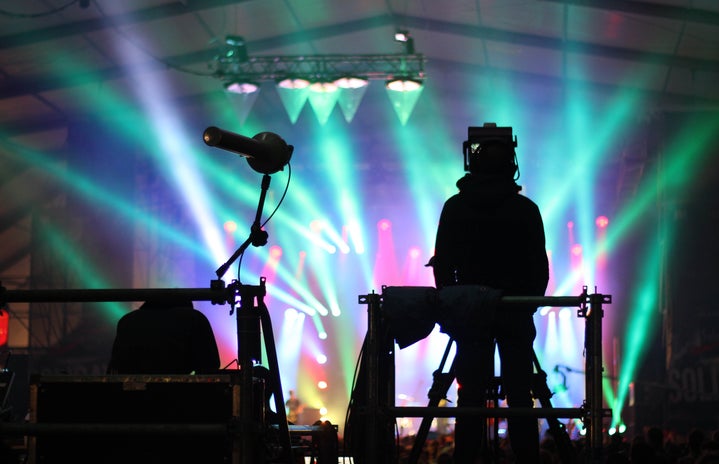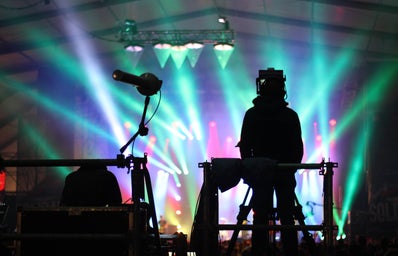For those who are pop-mad like myself, the world of classical music seems like an exclusive club for intellectuals and people who drink black coffee. Some may think; “it’s so boring, it’ll probably put me to sleep.” Additionally, it doesn’t help that most classical concert are so stuffy, you end up wondering if your dressy flannel makes you stand out a little too much.
As a kid, I always wanted to sing on stage. Seeing that my shower singing wasn’t going to help me get on “American Idol,” I joined the choir at my middle school. It was very daunting at first. I couldn’t read music, I couldn’t speak Latin, and I certainly couldn’t hold my arms at my side for more than five seconds. I wanted to quit until my teacher did something that I still think about now.
We were singing “Happy Birthday” to our classmate and friend while he played piano. We sang the last few lines and he finished us out with the final chords to “Let it Be” by the Beatles. After that, I was sure I found the right place. I realized that music from any time period had a lot of the same elements; a good beat, a sense of direction, and a lot of feeling.
So this is an informal introduction; my pop-lovers and rock fans, welcome to the world of classical composition. We’ll start easy:
Hello, Cello: 2Cellos and Orchestral Covers of Rock ‘n’ Roll
If you were up at 2:00 a.m. going through your YouTube recommended list in 2014, you’ve probably seen the band 2Cellos. The duo, consisting of classically-trained cellists Luka Šulić and Stjepan Hauser, rose to popularity in the early 2010s with their “Glee” cameo. They performed Michael Jackson’s “Smooth Criminal” and showed off their incredible talent for composing for strings, playing crazy fast, and breaking all of their bowstrings. All of them.
A highlight of their early career is their cover of Metallica’s Thunderstruck. The video is spectacularly tongue-in-cheek; the band storms an opera stage in period clothing to entertain a sea of rich folks with the first measures of a classical piece. The tempo picks up and they play with more intensity. Then, after a long sustained note, the first booming chords of Thunderstruck come to life. At one point, someone starts beating a cello like a drum. By the end, the audience is in shambles, one cello has a giant hole in it, and there are absolutely no bow strings left.
2Cellos’ entire archive is full of little gems like this, as well as covers of honest classical music that give the ancient tunes more emotional weight than older recordings. Being able to see these performers put their blood, sweat, tears, and infinite bows into the music brings it out of the stuffy opera house and into the homes of real people who don’t regularly sport monocles and top hats.
Mamma Mia, Let Me Go: The Rock Opera
Food for thought: no one is ever formally taught the tune or words to Queen’s mega-hit “Bohemian Rhapsody.” Yet, ask anyone to sing any part of the six-minute long song and they can probably do it with moderate success. “Bohemian Rhapsody’ uses what was exciting when classical music was new and updates it with a fresh face.
Queen was especially good at this. Most of their songs feature four, and sometimes eight, part harmony on the vocal track to add a depth to their songs that set them apart from rock bands of the time. Freddie Mercury alone had a four-octave vocal range, meaning he could sing everything from baritone notes to whistle-tone falsetto!
Queen isn’t the only rock opera group that’s blending classical and modern sound. Shortly after the British Invasion of the music scene in the 60s, Pink Floyd produced “Wish You Were Here,” with one song segmented into seven parts, almost like classic pieces that are split into arias or movements. This multi-part song has no lyrics and moving guitar riffs weave in and out of fully-orchestrated compositions. After them came the Trans-Siberian Orchestra, a band that became wildly popular for their rocking cover of the Christmas song Carol of the Bells. All of these bands find what makes classical music great; interlocking low- and high-points that leads to a big, loud finish.
Now that you’ve got a modern sense of what classical music can be, here are a few of my favorite real-deal classical pieces:
- “The Piano Concertos” by Nikolai Kapustin – These pieces are jazzy and always make a good time great. Don’t give the music to your piano player friend; their fingers will catch fire.
- “Rhapsody in Blue” by George Gershwin – this artist wrote most of the music that played over silent films, so his pieces are fun and jazzy. Great for doing homework to, in fact.
- “The Firebird Suite” by Igor Stravinsky – the three major movements, being the “danse inferno,” “rodondo,” and “bercuse finale” take the listener on an emotional roller coaster.
- “Veni Sancte Spiritus” by Wolfgang Amadeus Mozart – a grand piece full of complicated rhythms, overlapping parts, and “hallelujahs” for days.
- “The 1812 Overture” by Tchaikovsky – all I need to say is this megalith piece almost always features a canon. Fans of metal and certain Eminem songs will appreciate.



